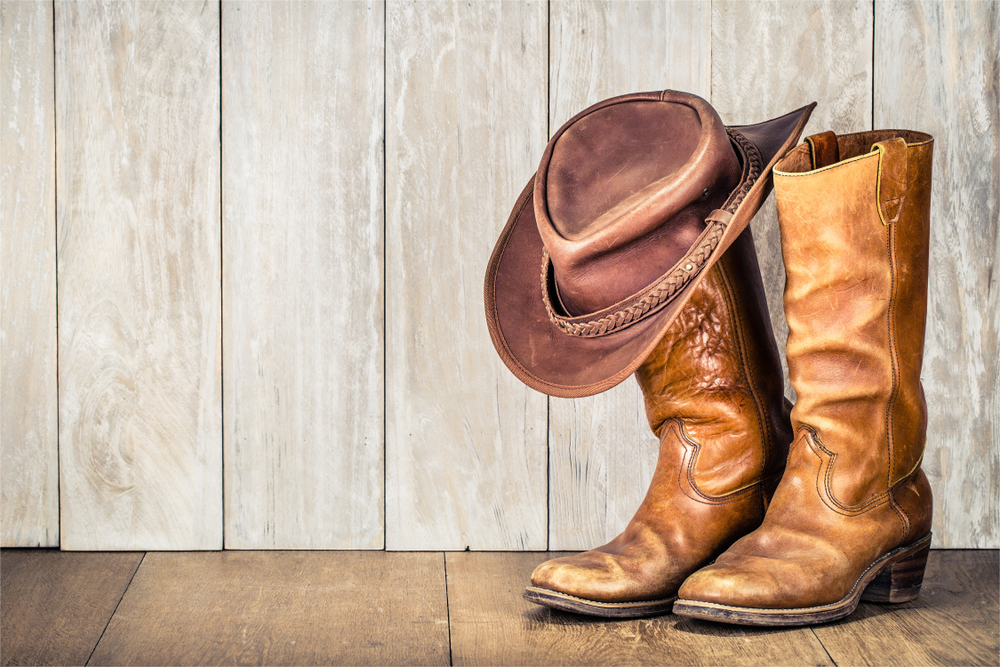The foot is one of the most common areas of injury in avid walkers, climbers, hikers, backpackers and skiers. This is predictable when one considers the many various factors affecting the feet during such recreational activities. These include proper or improper shoe gear, structural variations in the feet, environmental factors, rough terrain, cumulative mileage and impact factors to suggest just a few.
To eliminate one of those factors you can reduce risk of injury by paying attention to your foot gear – probably the easiest preventable measure you can take and one of the most important. When you purchase a brand new pair of hiking boots it is best to take the time necessary to slowly break them in.
There is no quick way when it comes to doing this. To do a good job, you have to put in the time and be patient or you will pay the price in sore feet, blisters and frustration. Never – ever- ever wear a new pair of boots out on the trail for a lengthy hike without going through the process. You may think you can handle it but if you listen to those who’ve gone before you and head the warning, you will have a much better hiking experience!
Protect Your Feet From Blisters, Pain and Regret! There is nothing like a new pair of hiking boots to get you excited about hitting those backcountry trails. Just the look of them says outdoors and adventure. Everyone knows what they represent. A good pair of sturdy boots is the most important piece of gear a hiker can have because without them you cannot get very far. Finding quality boots is very important. They can mean the difference between a hike from hell and a hell of a hike! I will probably always echo the Boy Scout motto whenever I can and that is “Be Prepared”. By being prepared with new hiking boots that simply means – break them in properly before going hiking!
You want your feet to be protected from the rigorous terrain often found on the hiking trails. Hikers encounter everything from rocks, mud, uneven surfaces, water, unexpected holes, thick brush and various obstacles along the path. Wilderness trekkers can expect to run into even rougher terrain. Along with great quality you want a perfect fit for your foot. They should feel snug but not tight as boots tend to loosen up as they get broken in. If they are too loose or too tight then you will have friction which is a definite cause of blisters. You need to be able to wiggle your toes freely yet feel a snug ankle support that does not rub or pinch. A boot that does not fit well can cause all sorts of problems. Also remember that men’s and women’s feet are different in many ways and women should not opt for a scaled down version of a man’s boot but rather purchase one specifically designed for the female foot to insure a better fit.
Once you’ve found the perfect boot that is the right price, look and fit then it’s time to break those babies in. Warning: if you do not break them in prior to hiking you may end up with serious injuries and pain. Having foot pain can alter the way you walk and cause leg and even hip or back pain. So taking this topic seriously will result in a better outcome for you.
The best way to break in new boots is to do it gradually. Start out by wearing your boots for short periods of time with the same socks you will be wearing to hike in. Just putz around your house wearing them for a day or two and see how they feel. If there are no tight spots or rubbing proceed with wearing them outside a few times when you do some light errands or yard work or just walking your dog. The key is to gradually put some mileage on them and allow the boots to loosen up and relieve some of the new stiffness.
Depending on the type of boots, it may take longer to break in and soften some heavy duty leather types or it may be quicker if you have a lightweight model that is not so rigid and stiff or even made of non-leather. There are many types and styles of boots today. Hiking boots are for more rugged trips like backpacking or longer hikes while hiking shoes are often more comfortable, lightweight and intended for use during day hikes. Many of the day hiker shoes are made of mesh and nylon and can be worn immediately like a tennis shoe.
If you search the net you will find references to a variety of ways that people like to break in new boots. Some use saddle soap and mink oil, Nikwax or NaturSeal leather conditioner, Neatsfoot oil, or alcohol and water. Some swear by getting them soaking wet and wearing them until they dry and conform to the shape of your foot. Some methods may work, some may not but gently breaking boots by wearing them over time will definitely work and costs nothing.
If your current boots are so comfy and broken in and feel perfect but have seen better days, then it’s time to start slowly breaking in a new pair while you still have your old kickers to rely upon. Before you know it they’ll be in perfect hiking shape too! It’s always hard to give up those old boots that you’ve spent miles of time with – it’s like losing an old faithful friend.
Before your trip you should purchase some moleskin at the local pharmacy to add to your first aid supplies that you should have in your pack anyway (remember -be prepared!). If during your hike you develop a hot spot the best thing to do is stop immediately and treat the area. A friction blister is the build-up of fluid or blood between the epidermis and dermal layer of skin caused by forceful rubbing or friction applied to the skin. A hot spot is the pre-curser warning that a blister will form if you fail to treat the area quickly.
Remove boots and socks and allow feet to rest and cool. A soak in a cool stream would be ideal. Shake out and dirt and sand or pebbles from boots and socks. Apply a soft piece of moleskin to the red area. It may prevent the development of a blister. Change into fresh socks if at all possible and/or apply some cooling foot powder.
Prevention of Blisters:
* Reduce perspiration by applying topical antiperspirant
* Identify areas of friction and pad them with moleskin
* Check shoe fit
* Wear socks that wick away moisture (polypropylene)
* Apply Vaseline to areas of friction
If you already have a blister do the following. If it has already broken, trim away any loose skin and apply antiseptic to prevent infection and then apply a bandage. Apply some moleskin or even duct tape over the bandage to lessen the pain when you start to walk again. If the blister did not break, use a sterile pin or knife cleaned with alcohol to poke it gently from the side to drain out the fluid. Leave the roof of the blister intact. Apply antiseptic and leave the skin intact as it serves as protection to the new skin underneath. Do the same as above with moleskin and tape. See a doctor if an infection does develop.
The socks you choose also play a very important role in your level of comfort during the hike. Cotton socks are a no-no. The absorb moisture and when wet will definitely be a source of chafing and blisters. Choose wool blend socks or wicking socks which are made with synthetic fibers that pull the moisture away from your skin. Also use a thin liner sock under your thicker socks to minimize friction and rubbing against your skin. Throw an extra pair or two in your backpack – they don’t weigh much and can really save your feet when a fresh change is in order.
Simple but important tips: trim your toenails before the hike and make sure your socks have no holes – two simple preventive measures that can save you some rubbing that leads to blisters and pain. Also if laces are tied too loosely or tightly friction again can cause blisters so tie them just snug enough to be secure and comfortable.
This advice is also for anyone who buys new boots, especially leather ones -construction workers, military personnel, ice skaters, mountain climbers, cowboys, etc. Any new boots should be broken in so as to help it mold and conform to the shape of your own foot and avoid causing you any pain from blisters. There are lots of techniques for softening leather and methods of breaking in but for hikers the best way is to wear them and walk in them since that is what you will be doing in them anyway!
Happy trails and happy feet!
Article Source: https://EzineArticles.com/expert/Gail_Leopold/136334
Article Source: http://EzineArticles.com/2551633

